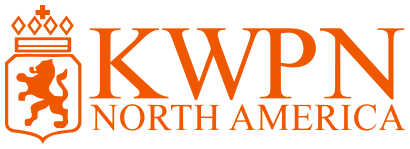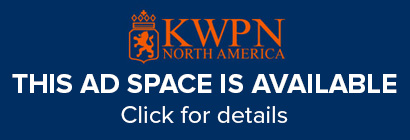Keurings
Keuring Information
General Information
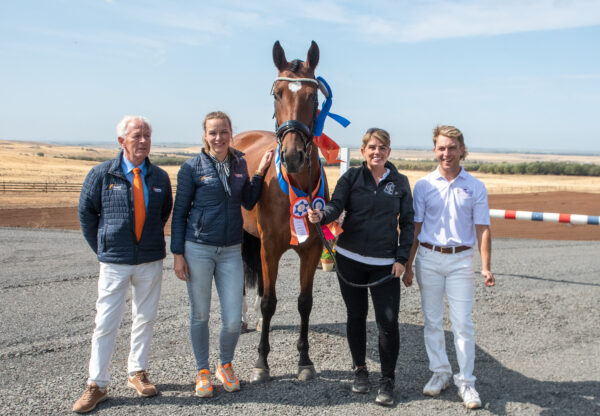
2024 NA Reserve Champion DG Bar Cup 3yo: QUELLENPERLE SL Elite IBOP (dr) 80 Vitalis x Quellenzauber by For Romance II Breeder: Stefanie Lohman (Germany), Owner: Adrian Ward, JAAW Equine (UT)
Every August/September the KWPN-NA organizes and holds its inspections throughout the U.S. and Canada.
For the 2025 Keuring Tour schedule, click HERE. For the Entry forms and Keuring Booklet, click HERE.
Young and mature horses are evaluated by a judging committee led by a KWPN inspector. The jury looks at foals, yearlings and two-year-olds for premium grading, as well as horses three and older for acceptance into the studbook. There are also performance classes such as the IBOP, the Global Equine Sires Cup for young dressage horses and the Global Equine Sires Cup free jumping competition for young jumpers and hunters. In addition to the Riding type horses, Gelders and harness horses are also judged.
For more information on specific Keuring Procedures per breeding direction, click HERE.
To award breeders of horses bred and born in North America, Iron Spring Farm sponsors the Keuring Championship Awards. These awards will distribute prize money and recognize the Champion and Reserve Champion Foal and Mature Horses (3-7 year-old stallion, mare or gelding) in each of the breeding direction: dressage, jumper, hunter, harness and Gelders.
Read more about these and our other Keuring Awards HERE.
Depending on interest in attending an inspection, the KWPN-NA office, Jury and Board of Directors decide the dates and locations of the inspections across the states and provinces of the U.S. and Canada. Inspections are open to eligible KWPN horses and those registered with an ‘Erkend’ studbook, that are owned by current KWPN-NA members.
Different from inspections in The Netherlands, is that it is possible to present foals through two-year-olds, mares and geldings for stud-book and predicates, as well as the initial inspection of stallions for approval—plus performance classes such as the IBOP for keur or the IBOP predicate, the DG Bar Cup (comparable to the Pavo Cup) and the Global Equine Sires Cup—at the same location on the same day. In effect it is possible for a PROK mare to be accepted into the studbook, earn her ster predicate, become keur eligible (voorlopig keur) and pass her IBOP at one keuring, thereby going from foalbook to Elite in one day.
Who is eligible to go to a keuring?
Foals, yearlings and two-year-olds must be KWPN registered as follows:
- KWPN Foalbook
- KWPN Register A
- KWPN Register B (with restrictions)
- Foals must be a minimum of four weeks old at the time of the keuring.
Colts that have not completed their pedigree approval cannot enter the advice keuring, but may be premium graded with the other two-year-olds.
Horses aged three or older and stallions for approval must be registered as follows:
- KWPN Foalbook or Studbook
- KWPN Register A
- KWPN Register B (with restrictions)
- KWPN Auxiliary Foalbook or Studbook, only if eligible for Studbook (under the same qualifications as a Register A horse)
- Mares registered with an EU Erkend studbook with a like breeding goal
- Stallions registered with an EU Erkend studbook with a like breeding goal (for stallion approval only).
- Mares, Stallions and Geldings from non-Erkend registries with 3 generations of Dutch (KWPN) in their pedigrees. Restrictions apply and pedigrees must be pre-approved by the office before keuring admission is permitted.
Note: Stallions that have not completed the pedigree approval cannot be presented as a stallion prospect, but may be linear scored in the “Geldings and Stallions” class.
Register A Horses and Horses Registered with an Erkend Studbook
Mares with registration papers from an Erkend Studbook born 1994 or earlier may be presented at a studbook inspection without any further conditions. The original papers must be mailed with the entry to the KWPN-NA office. They will be stamped upon acceptance into the Studbook.
As of 2018, Horses with Register A papers and mares with papers from an Erkend studbook born 1995 or later can participate in studbook inspections but must meet additional requirements (navicular x-rays, D-OC test, sport/IBOP or any combination of those) to be considered for keur/elite. Endoscopes are no longer required for Riding Horses unless going for stallion approval. No additional requirements are necessary to present for the Studbook inspection or to get the Ster predicate. Register A mares are now eligible for Top Fives.
Register B stallions may sometimes be presented for approval if the stallion committee feels they offer something to the breeding program that is not readily available otherwise.
General Requirements for Participation in Studbook Inspections
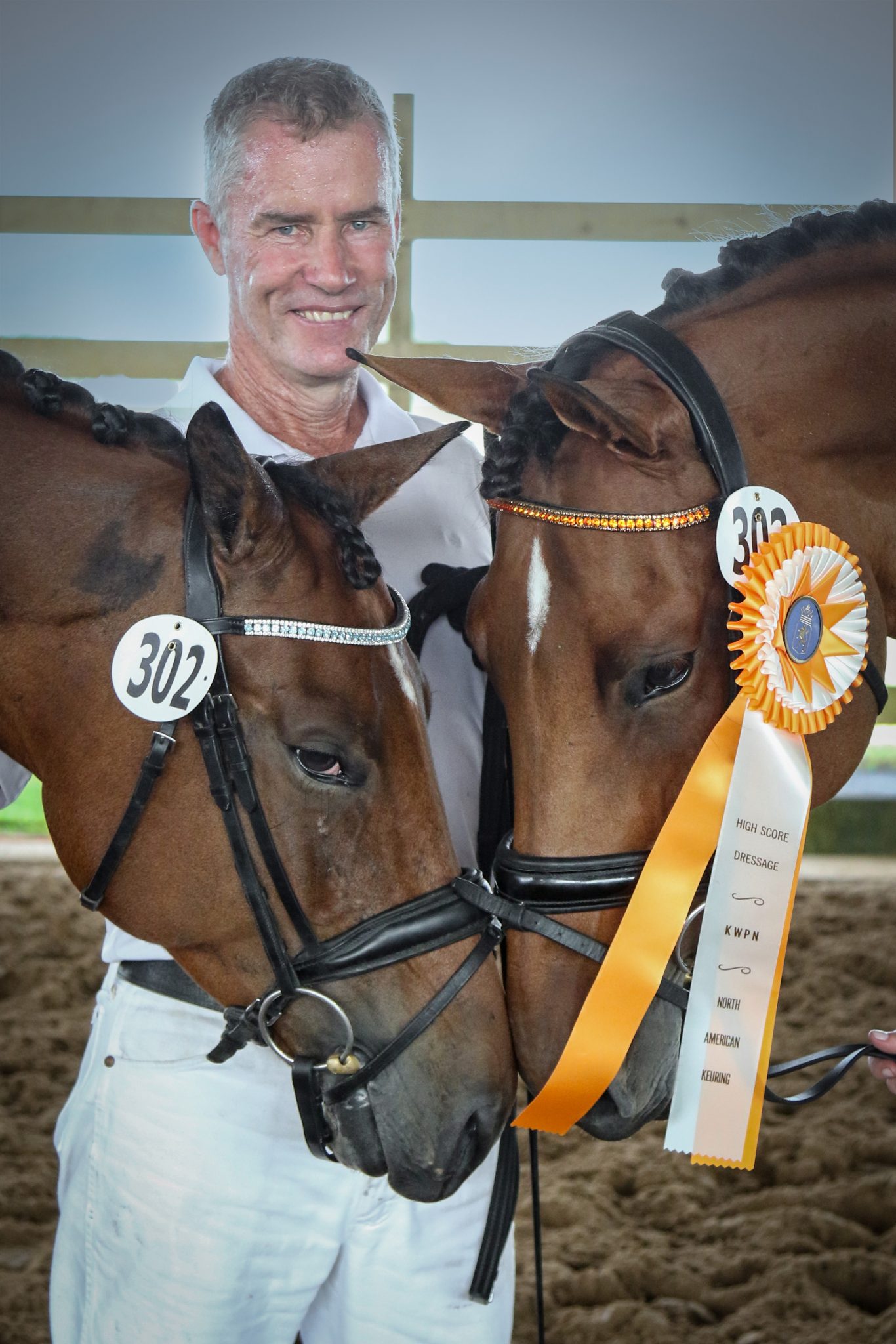
Dee Clair and Haiku
Entering
Entrants must sign up ahead of time. Walk-ins on the day of the keuring are not allowed to participate. Your horse will not be considered “entered” and your horse’s name will not be counted in the final count for the site host until all requirements are met (payment, DNA, release, etc).
The keuring information booklet, entry and liability release are available on-line and are mailed upon request. The entry form and liability release must be completely filled out and mailed/emailed to the KWPN-NA office by the deadline. Registration papers for horses in the studbook inspection should be mailed in with the entry. Foals may only enter a keuring after registration has been applied for. Foal parentage must be proven prior to keuring date. Foals must be a minimum of one month old at the time of the keuring.
Liability Release
Owners, handlers, riders and ring crew must all sign the KWPN-NA Liability Release.
Membership
Only current KWPN-NA full members in good standing may enter horses in a keuring.
Ownership
Owners of horses presented at a keuring must:
- be the ‘owner of record’ with the KWPN-NA; OR
- have a transfer in progress; OR
- have a lease agreement on file with the KWPN-NA.
Costs
These usually consist of two parts:
- Class fees paid to the KWPN-NA.
- Fees paid to the keuring host for stabling, grounds fees, etc.
Your horse will not be entered and allowed to be presented unless financial obligations are met prior to the keuring.
Refunds
In case of a recent injury or illness of a horse only, the owner may apply for a refund of the class fee. Refunds (less a $50 handling fee) will be given if a veterinary certificate is submitted within 30 days of the keuring. No refunds will be given for pregnancy, inability to load, shoeing problems, other non-veterinary causes or human ailments. Any late fees incurred are non-refundable. Once the keuring schedule is set, refunds are at the discretion of the organization.
Bridle Numbers
Each horse will get two numbers that must be attached to both sides of the halter or bridle so that they are clearly visible from either side. When showing a foal, the numbers may attached be to the dam’s bridle. The jury should be able to see the number at all times without having to walk around the horse. Numbers are not to be held by the handler or be in their pockets.
Identification/Registration
Papers Registration papers for horses entering studbook classes must be mailed in with the entry form. Owners of all other horses must have their registration papers available at the keuring when checking in. The only exceptions are foals whose papers have not yet been issued or horses with a transfer in progress. DNA must be on file with the office before keuring admission is permitted. This includes all current year foals. NO EXCEPTIONS.
Branding/Rebranding
In accordance with the policies of the KWPN in the Netherlands, as of May 1, 2022, KWPN-NA horses will no longer be branded. Horses have not been branded in the Netherlands since September 2000, and the KWPN has asked that we discontinue the practice in North America. If you have any questions or concerns, please reach out to the office.
Handlers & Riders
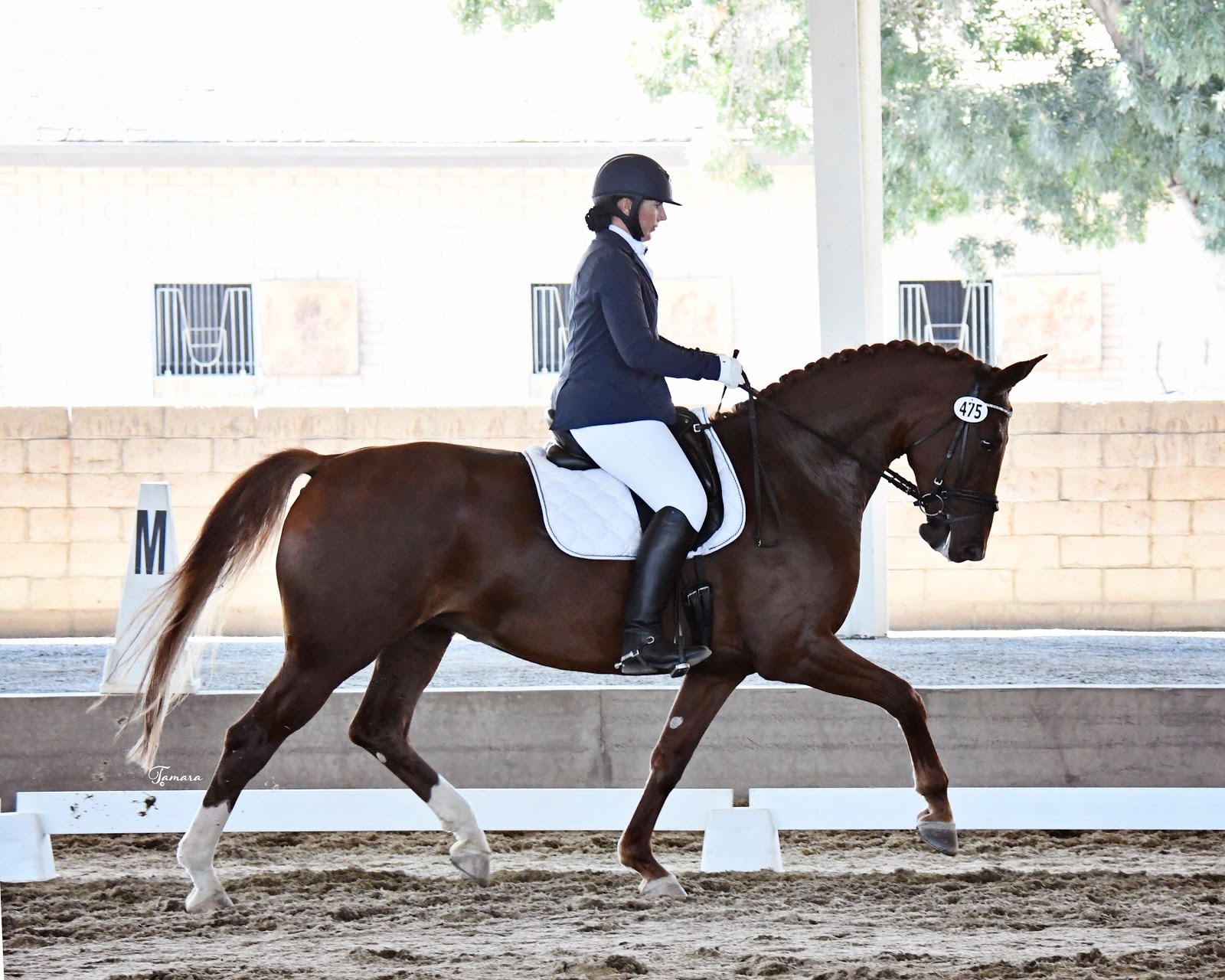
Janda Keur IBOP (Parcival x Wanda Keur, Sport-Dr by Sirius), Photo: Tamara with the Camera
Handlers
Horses are presented by a handler and not more than one assistant. During free movement or free jumping only the handler is allowed in the ‘cage’ or arena.
Foals and mares should each have their own handler. Owners with more than one horse in a class must have sufficient people present to accompany all horses into the ring for the walk-around and ribbon presentation.
Handler Attire
Anyone entering the ring must wear white: white trousers, white shirt and white running shoes. Amish handlers may wear blue instead. The jury may excuse a horse if the handler/assistant is not correctly dressed.
Rider Attire
Riders must wear light breeches, a dark riding coat, a white shirt and tie or a white turtleneck, boots and hard hat. In case of excessive heat, a polo shirt may be substituted for shirt and coat with permission of the jury.
Cell Phones/Smoking
The use of cell phones or smoking in the arena or cage is prohibited.
Horses
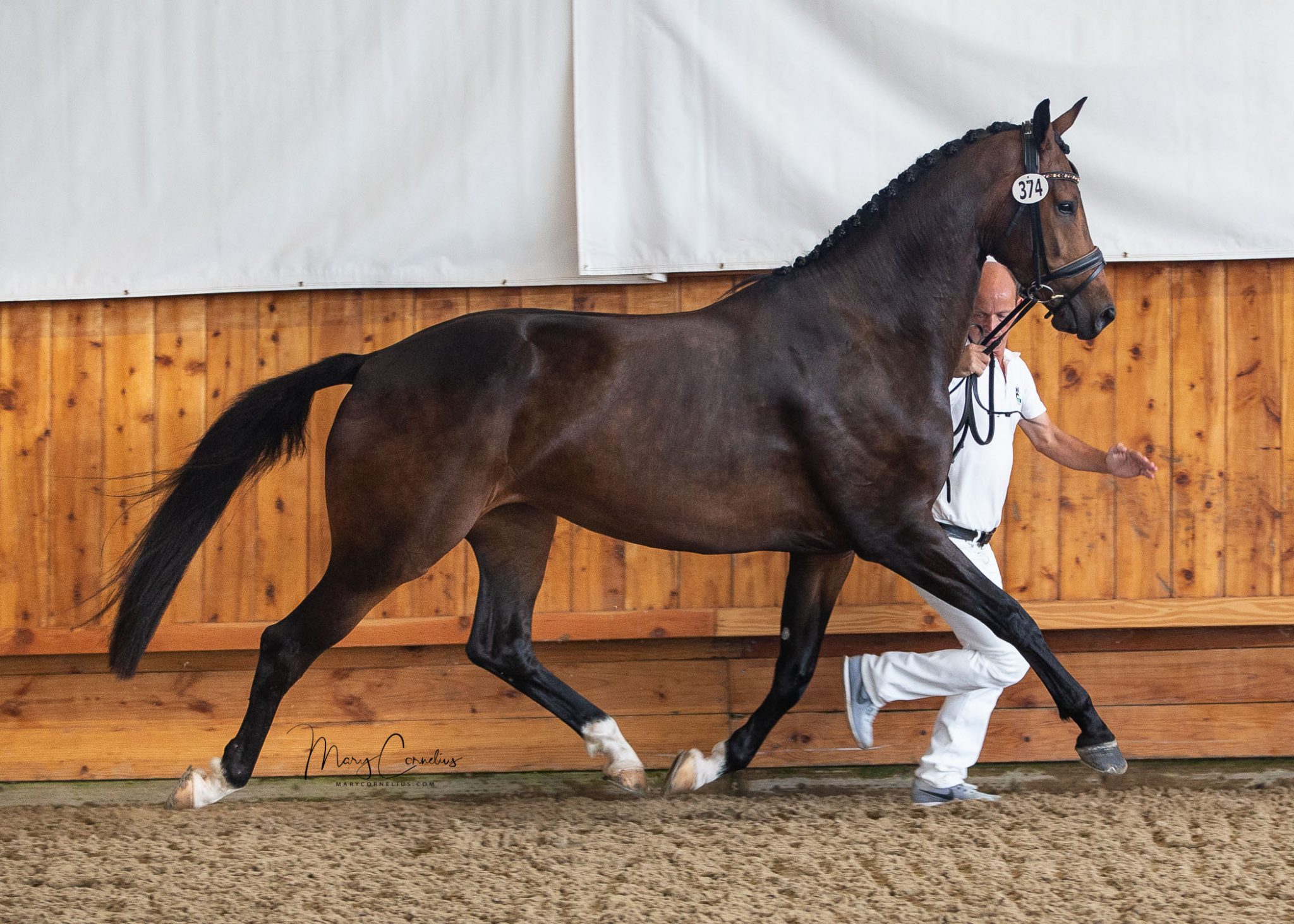
Kiriska ster, keur elig. (Jazz pref x Dariska LPW by Rhodium); Photo by Mary Cornelius
Immunizations
Horses participating in the keuring should be current on local vaccination requirements. Please check with the keuring host for specifics.
Shoes
Riding/Gelders Horses
Foals, yearlings and two-year-old fillies and geldings may not wear shoes. Two-year-old colts and horses three years and older may wear shoes. Shoes may be a maximum thickness of 8mm. Specialty shoes (e.g., studded for jumping) are not allowed. Corrective shoes or pads are not allowed.
Harness Horses
Horses two years and older may wear shoes with a maximum thickness of 12mm with a maximum width of 25mm. Again, specialty shoes, corrective shoes or pads are not allowed.
Horse Attire
In-Hand
Riding type foals and yearlings are presented in a brown or black show halter; Harness in white and Gelders in either color. A rope or leather lead should be used. The use of chains is strongly discouraged.
Riding type horses two and older are presented in a brown or black snaffle bridle, Harness in white and Gelders in either color. Riding reins may be used with a bridle.
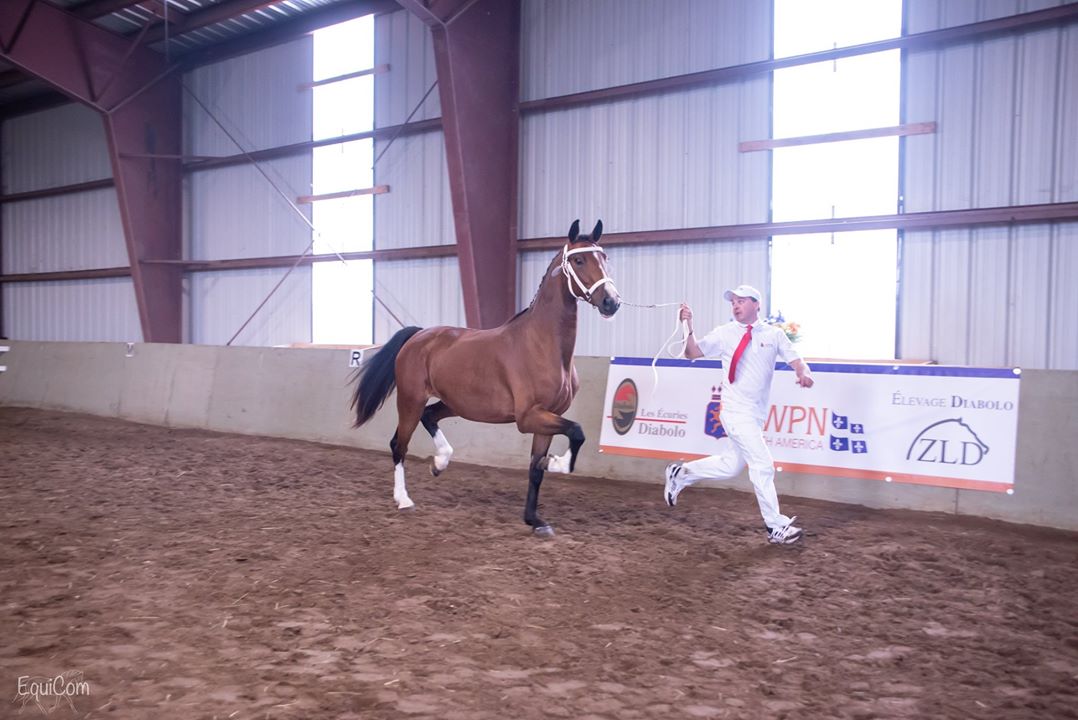
Little Miss Kelley Ster (Graaf Kelly x Bo Keur by Uromast); Photo by EquiCom
Leg protectors are not allowed during the in-hand presentation. During free movement and free jumping foreleg tendon protectors may be worn. Wraps, bell boots and leg protection on hindlegs are not allowed at any time. The jury reserves the right to request removal of any type of leg or foot protection.
Under Saddle
An English saddle and a bridle with a snaffle bit—a simple, smooth-mouthed snaffle, with not more than two joints; metal or rubber. Flash, figure eight or dropped nosebands are allowed; double bridles are not allowed. Martingales, auxiliary reins or other gadgets are not allowed. Boots on forelegs are allowed. Wraps, bell boots and leg protection on hindlegs are not allowed. The jury reserves the right to remove any type of leg or foot protection. Ear bonnets are not allowed.
Artificial Means
No artificial means used to enhance conformation or movement is allowed at a keuring. The use of an artificial hair piece in the tail or mane is acceptable.
Clipping Foals
Sometimes foals have not lost their entire foal coat by keuring time. Body clipping is not recommended and clipping the whiskers and ears is prohibited. The foal’s mane should be braided.
Drugs
No drugs of any type are allowed. All horses are subject to drug testing at the discretion of the jury. All stallions presented for approval will be drug tested at owner’s expense!
Safety
The jury has the right to remove or eliminate any horse that they feel may contribute to an unsafe situation.
Injury/Veterinary Disclosure
A mare whose movement is irregular because of an injury may be presented and entered into the studbook. However, a veterinarian’s statement that the irregularity is due to an injury and not a hereditary condition must be submitted. The mare must be able to walk and trot. She will be judged in-hand but cannot participate in free-movement or jumping.
All corrective or cosmetic surgery should be disclosed in writing.
Whip
A plain whip (nothing tied to the end) and the use of a small box rattler are the only aids allowed. If the jury feels that the horse is negatively affected, the handler may be requested to go around again without the aids.

